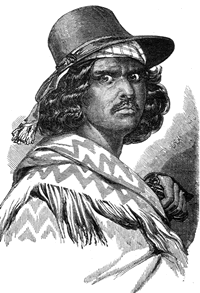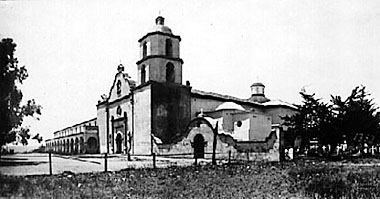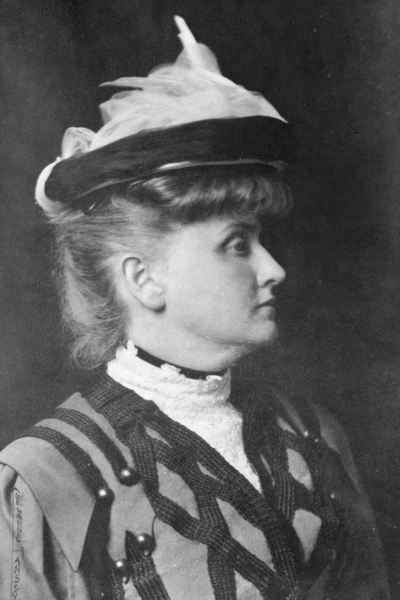Following on the heels of Helen Hunt Jackson’s
early-California romance, Ramona (1884),
this novel makes clear in its subtitle that it’s a “Romance of the Modern
Time.” Set in the post-gold rush years, it tells a story already familiar to
readers of Maria Amparo Ruiz de Burton’s The Squatter and the Don (1885). It concerns the disputed ownership of a
former Spanish land grant.
Plot. Settlers
have put down roots on a large tract of land in Central California believed to
be otherwise unclaimed. When a deed owner belatedly surfaces, a wealthy man in
San Francisco, Alexander Tremaine, buys the property. He intends to drive off
the squatters and build a big country home for himself.
 |
| Joaquin Murietta |
Carmelita has befriended the Jesuit priest of the local
mission, about whom there is some mystery. She does not know that he left a
lover to become a priest and that, unknown to him, she has taken up residence
at an isolated house nearby. She languishes there, having given up hope of a
happy life in the world outside. Carmelita also doesn’t know that Tremaine is
the man who has bought Los Cerritos. Nor does she know that he is already
married.
The settlers determine to take up arms against Tremaine,
to fight for possession of the land. They are led by a burly giant of a man,
Carlos Castro, who attacks Tremaine, breaking his wrist and putting a knife
into his shoulder. Ready to finish him off with a pistol shot, he discovers
that Carmelita has his gun, and he flees when she threatens to shoot him.
Tremaine decides in the end to avoid further confrontation
with the squatters, even as they surrender to the sheriff who comes to evict
them. Instead, Tremaine offers them a deal. They can keep their land provided
they work hard and are truly productive, showing some ambition instead of
passing the time in drinking, gossiping, and idling.
 |
| Central California |
The unpleasant Mrs. Tremaine objects. She has plans of her
own for their 50,000-acre get-away, and she doesn’t intend to share it with any
but guests of her own choosing. Atherton handily dismisses both her and the
bothersome Castro by having them trampled in a cattle stampede.
Romance. Carmelita
is the romantic heroine of the novel. She has the intelligence and
sensibilities of her mother and the independence and social conscience of her
father, who robbed only from the rich. A child of Nature, she gravitates to the
old growth forests on the mountainsides above Los Cerritos.
Tremaine, rich with inherited wealth, is a lost soul in
the world. Money can’t buy him love. Something of a dreamer, he scorns the
materialistic world of the well to do and yearns to escape from it. He is
immediately taken with the simplicity and honesty of Carmelita. With her, for the
first time in his life, he feels he has found a companion.
The priest and his one-time sweetheart, Geraldine, are another story. The romance in their case is that of hopeless love, the carnal vs. the spiritual. Each suffers miserably as the priest’s religious vows separate them forever. There’s no happy ending for these two. Exhibiting more common sense, Carmelita observes that love of God is a poor substitute for love of another, especially when a person is young.
 |
| San Luis Rey de Francia, California, c1910 |
Villainy. By all
rights, Tremaine should be the villain of the story, and we take him to be so
through the first half of the book. That’s before we actually meet him and
discover that he is not an ogre as he’s been pictured by the people of Los
Cerritos. What Atherton offers instead is a glimpse into the heart of a man who
has only been cast as a villain.
A foil to well-born and high-minded Tremaine is Carlos
Castro, the vaquero in chief on a Los Cerritos ranch. Though a horse thief, he
is adored by his comrades. Among his neighbors, he is so well liked for his
“enormous vitality” and his “rude magnetism” that they always acquit him of any
crime. So full of energy, he is like a volcano waiting to erupt.
The padre is yet another foil. Like Tremaine, he despairs
of finding happiness in life. The difference between the two men is that
Tremaine is not bound by vows to the Almighty. He can find a way to do some
good with his wealth, and he can enjoy true love.
 |
| Redwoods, California |
Arriving at Los Cerritos, she is offended by living
conditions at the camp where the evicted settlers have been living and
complains that they are not even “picturesque.” The narrator observes that with
her outraged sense of refinement “she had the latent vulgarity of all cold
natures.”
Style. There is
poetic indulgence in much of the description of landscapes and setting. The
ranchland that is Los Cerritos is breathlessly described: “Those fairy-like
hills, golden in autumn, in spring so rich and so lavishly colored that their
dew drops surely held imprisoned the rainbow’s jeweled hues,” and so on.
Emotions run under the surface of much of the novel, and
there is high drama as Castro stirs up the settlers to fight Tremaine. But a
scene between Geraldine and the padre spills over into weepy melodrama.
 |
| Gertrude Atherton, 1904 |
Wrapping up. Gertrude
Atherton (1857-1948) was born in San Francisco. Over a writing career that
spanned 60 years, she produced a great many works of fiction. Her family being
averse to her writing, she published her first novel in 1888 under an assumed
name, Frank Lin. Many of her novels traced the developing culture of
California, from the Spanish colonial period to the modern world.
A young widow, Atherton traveled in Europe and lived for a
time in New York and London, settling again in San Francisco. There she was a
notable presence among the city’s literati. Several of her novels and stories
were made into films. A list of her books can be found at wikipedia.
Los Cerritos is
currently available online at google books and Internet Archive, and for kindle
and the nook. For more of Friday’s Forgotten Books, click on over to Patti Abbott’s blog.
Image credits: Wikimedia
Commonsn
Coming up: Gertrude Atherton, Perch of the Devil (1914)

Great review/overview of Los Cerritos, Ron. I'm enjoying your Friday's Forgotten Books. Where do you find them? Do you have an online search? My book, The Dividing Season, (Just won Epic Award for Historical Fiction in March!!)is based on women in their 80s and 90s that I interviewed for newspaper and magazine profiles back when I was freelancing. Their stories were so fascinating that I plotted my novel loosely on their collective experiences. I can't help but believe that Gertrude Atherton might of done the same thing.
ReplyDeleteThe stories of women in the West are a treasure trove of social and personal histories. I understand your interest in preserving them. I find these old western novels in various references, adverts in period magazines, etc. A good source for women writers of both fiction and nonfiction is Nina Baym's book, "Women Writers of the American West, 1833-1927". There's another Gertrude Atherton novel coming up tomorrow at BITS.
DeleteHi Ron,
ReplyDeleteThanks for the reference and to Karen for asking. I completely enjoy reading your fabulous reviews of work by early western women writers! I don't remember hearing of Gertrude Atherton using the Frank Lin name.
Franklin was her mother's maiden name. I found this detail on wikipedia. It could very well be erroneous.
Delete"Frank Lin" is cited as Atherton's pseudonym's in several standard reference works. It was used only for WHAT DREAMS MAY COME (1888). Her next book, HERMIA SUYDAM (1889), carried her own name. LOS CERRITAS was her third book.
DeleteRon, thanks for a fine review. I have been meaning to read Gertrude Atherton's work for a while now. I have access to many of her books online though, surprisingly, this one isn't one of them. On to Archive.org. By the way, Ron, do you read these early western fiction on an e-reader or do you actually read physical editions? I can't imagine getting hold of the latter out here.
ReplyDeleteWhen I started reading these early westerns, there were copies to be had at the Los Angeles Public Library. When they ran out, I went online to find them and have been able to download over 95% for the nook or kindle. A small number, I have purchased. I've been unable to find only one novel: Hugh Pendexter's THE MANTLE OF RED EVANS (1914). I'm hoping some day a copy will turn up somewhere.
DeleteEmily Wortis Leider's California's Daughter. Gertrude Atherton and her Times (Stanford UP, 1991) is one of the finest literary biographies I've ever read - and yet, I've never been able to make it very far into an Atherton novel. I suppose I should give it another go, but the poetic indulgence you quote leads me to believe I am doomed to failure.
ReplyDeleteSee what you think of her PERCH OF THE DEVIL, reviewed today, 5 April.
Delete